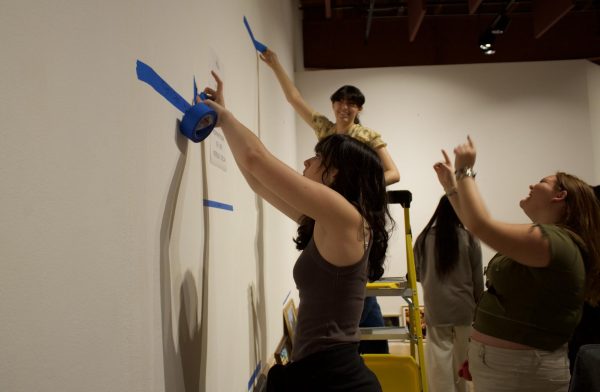The Death of Race Horses Continue to Increase
A gelding looks into the camera.

Equestrian horse stands tall in his stable.
In recent years, and specifically the past few months, the news has been filled with pictures of horses lying still, injured from training and racing. Many of these stories have been mainly centered around the Santa Anita Park Racetrack in Arcadia, California. Since December 26th, 36 horses have been euthanized, and 72 since the 2018 season combined. Before the track closed down for its off season, it obtained “4.4 deaths per one thousand starts through forty cards and 2,725 starters” according to LA Times. The most recent death was the euthanization of a two-year-old filly by the name of “Bye Bye Beautiful,” whose leg was injured during a race on Sunday, October 27th. The Friday before that marked the 35th death of the five-year-old racehorse “G Q Covergirl” who injured her front two legs while training and had to be put down the same day.
Investigations have been conducted by The California Horse Racing Board (CHRB), which categorizes the injuries into three groups: racing, training, or other. The racing and training trauma come from the track, either during training or during the race itself. 81% of overall the traumas that the horses face are racing or training generated that end in euthanasia. The “other” category includes non exercise-induced injuries, such as respiratory, gastro-intestinal, and neurological diseases.
Tracks that are made of dirt are the biggest contributor of these accidents in contrast to their synthetic counterparts. Arcadia has a dry climate and when combined with last year’s wet winter, it causes it to be hard to perfectly seal the track for optimum safety. It may become too soft following the rain, but hard to readjust after the arid summer. The softer the dirt, the easier it will be for the horses to break an ankle or limb.
When training and racing, the most common injuries that horses receive are humeral and scapula fractures. Humeral fractures typically occur when the bone weakens due to prior stress fractures. They are commonly seen in the neck of the humerus and cauda (above the elbow joint). Both of the horse’s front legs are usually affected and exhibit reluctance to perform. This may also cause overall lameness, and the horse may be idle for long periods of time. Their condition often worsens as the horse returns to training after a break. Scapular fractures similarly occur prior to pre-existing injuries. These stress fractures are commonly seen in the front limbs of a horse and may also cause partial lameness, but normally recovery is achievable. Just as humeral fractures worsen after practice, stress scapular fractures evolve similarly.
Award-winning equestrian rider, Ashley Andersen, is a junior at Huntington Beach High School and has been involved in a number of competitions throughout the years. When asked about the increase of horse fatalities she said, “the horse deaths in Santa Anita are tragic. I have heard about it nonstop for the past nine months or so and I am horrified about it.”
Andersen continued to say that “they seem to not know exactly what is causing it, but I heard there are three times more deaths in Santa Anita than any other race track in the country.”
Andersen elaborated that “common injuries for horses can be abscesses in the hoof, injured muscles or tendons, and even some long term injuries such as arthritis.”
“Uncommon [injuries] are happening at Santa Anita, these include broken legs, broken shoulders, etc… and these injuries sadly cause the horses to be put down” said Andersen. “With these disabilities, it makes it harder for the horses to get up, keeping them idle for too long.”
Andersen believes the race tracks are affecting the horses’ well-being. “They start the horses racing at age two to three which is 13-18 in human years. At this point, the horses are not fully developed and are more prone to injuries,” she said. “Horses should not start training until they are at least five or six years old,” she explained, because “it is too much physical activity on the race track for horses that young.”
Andersen was asked if horse racing should be ended or addressed. She outlined that “horse racing definitely needs to be addressed if not ended for good. I think this is definitely a controversial topic, but it is time to put the well-being of a living animal ahead of a little gambling.” Without being acknowledged, the issue will continue to arise.
Lastly, when asked if there is a way to prevent putting the horses down after their injuries, Andersen answered that “in some cases there are ways to not put a horse down after their injuries happen.” Horses are large animals that range from 1000-1800 pounds, so when they break a bone, that prevents them from being able to move and does not provide the with enough circulation to live.” Contrasting this, she also discussed how “in some cases is the fracture very slight, they could be able to save the horse, but it would not have a good quality of life in the future.”
With the increase of injuries in Santa Anita, deaths are rising within the horse community. Racing horses continues to present controversy, and the community will have to wait to see if policy changes or environmental changes are made to the track in order to improve conditions for racehorses.
Your donation will support the student journalists of Huntington Beach High School. Your contribution will allow us to cover our annual website hosting costs.
Thank you for supporting our program!







